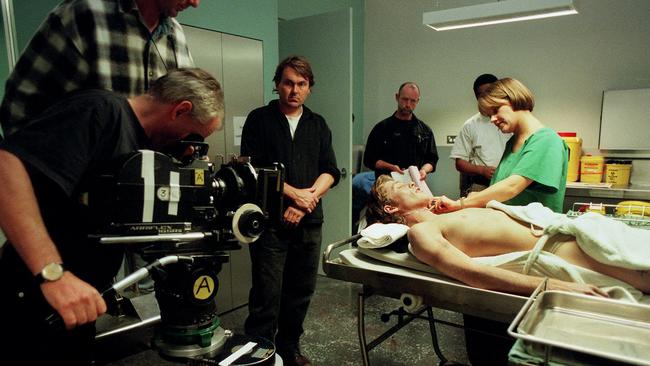Does it appear to be a doddle, playing dead? It isn’t
Playing a deceased character on TV or the stage might not look difficult, but there’s much more to it than holding your breath.

Before we get started, please do not confuse NIDA with NIDA. The National Institute of Dramatic Art is perhaps better known than that other NIDA, the National Institute for Death Actors, an organisation I founded some years ago in response to the growing demand for actors skilled in playing dead people in film and television.
Does it appear to be a doddle, playing dead? Portraying a deceased character, a stiff, a corpse, a cadaver, a carcass, a John or Jane Doe? It might not look difficult, but there’s much more to it than holding your breath. It’s a bit like being a member of the Queen’s Guard, wearing a bearskin hat and standing ramrod stiff outside Buckingham Palace while people make rude noises and take selfies. You have to make yourself impervious to all distractions. Like the famous parrot in Monty Python, you have ceased to be and joined the choir invisible.
OK, on the one hand actors playing corpses don’t have to learn lines. They chiefly have to learn to lie still, either on the hard ground in a crime scene, or in a mortuary freezer, or on a post-mortem slab. This is both difficult and, if you’ll forgive the pun, dead boring. That’s why lesson one at NIDA is meditation (Dead Actors’ Equity does not approve of sedation).
Remember that you can be under a sheet for hours while the walking, talking actors do interminable takes. You can’t twitch or scratch yourself. You can’t have a loo break. You’ll be made to look as pallid as possible – pale all over, in fact, as autopsies are conducted in the nude. You in the nuddy, that is, not the coroner. You’ll probably have prosthetic wounds from being murdered, too, so that means spending hours in make-up. And you’ll be covered in stitches, though without a stitch on.
It’s not just Silent Witness. In the fight to the death for audience share, the television networks and on-demand services such as Netflix and Stan have hundreds of “crime procedurals” for which they need talented corpses – for that big scene when the sheet is pulled back and the body is identified by an overacting friend or rello. You’re unveiled like a sheet being tugged off a statue, and you cannot be seen breathing. Not the slightest twitch. Practise it at home this morning – you’ll see it’s not easy without the proper training. That’s why would-be roadkill for film and TV flock to my NIDA. (Given that attractive younger women are the victims of choice for serial-killer drama series and true crime doco re-enactments, most of the members of Dead Actors’ Equity are women – and have achieved equal pay. That’s progress of a sort. And there’s no slab counterpart to the casting couch, so no problems with Harvey Weinsteins.)
Our posthumous profession has its challenges. Undertakers have been trying to cash in by gatecrashing film and TV sets and offering to lease out actual corpses. And digital tricksters can eliminate any hint of breathing by an untrained actor. Both could be the death knell for job opportunities.
It’s hard enough already. Movie corpses get no body-doubles, no horizontal stand-ins. And the pay’s lousy. Stiffs get stiffed – the big money goes to the uprights who not only get the $$$ but the statuettes, those Oscars, BAFTAs and AFI awards. No prizes for your death-defying performance as a deadie. No chance to be wheeled on stage on a trolley to finally have the chance to speak – to thank your mum, your agent, the producers. And NIDA. Where’s the Oscar for Best Supporting Corpse?



